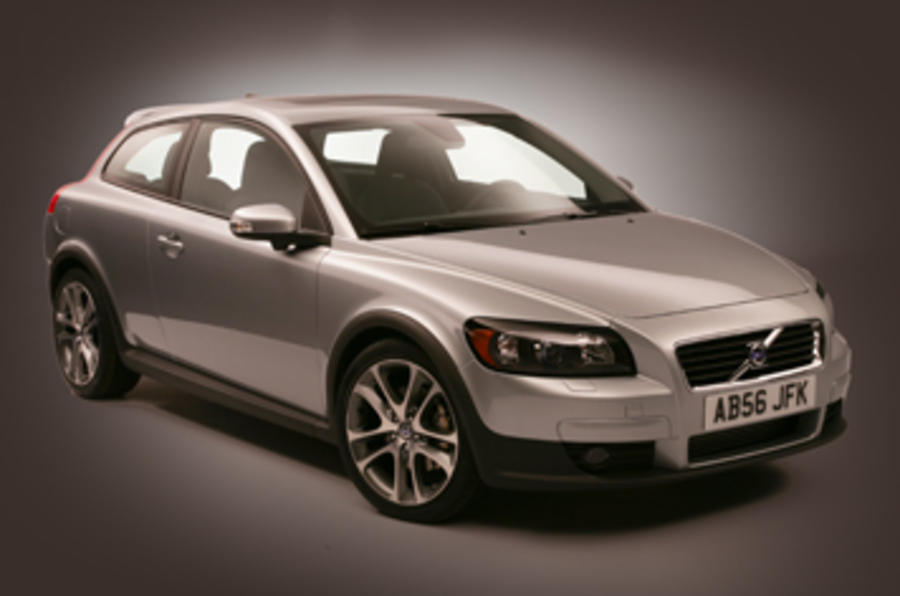What is it?
Volvo's new four-seat entry-level coupe. It is due in British showrooms very early next year, priced between £14,750 and £23,795, depending on which of the eight optional engines and four trim levels you choose.
The C30 is the latest offering from the set of shared technologies, chassis components and powertrains that have so far produced the Ford Focus and Mazda 3, plus the Volvo S40 and V50, which are the saloon sister and estate brother of the new C30.
What's it like?
Volvo’s marketing people are inclined to hand out a lot of unconvincing guff about this being a brand new kind of car for a new generation of non-Volvo yuppie buyers (which recent new model has not had older people as its early-adopters?) but what really makes the car appealing, at least to car enthusiasts, is that it takes the best from two coupes which are part of Volvo’s rich heritage — the 1800ES from 1972 and the 480ES from 1986 — and does it better.
Three of every four C30s will go, Volvo insists, to buyers who have never owned a Volvo before. It will become the new entry model. Though it has the same height and wheelbase as an S40 saloon, the C30 is 22cm shorter, all of it taken from the rear overhang, so it looks petite, sleek and graceful, even though it meets the pedestrian protection collision laws which have brought raised bonnet heights and bluff fronts to so many smaller European cars.
There are eight engine choices. The entry model, the £14,750 1.6S rides on 16-inch wheels and gets the four-cylinder 99bhp petrol four familiar from the Ford Focus. There are 1.8-litre (125bhp), and 2.0-litre (145bhp) engines, plus a 2.4-litre (170bhp) five-cylinder, but the daddy of the lot is the 220 bhp, 2.5-litre T5 petrol turbo, which shares its engine and six-speed manual transmission with the Focus ST.
On the diesel side, the entry engine is 109bhp, 1.6litre common-rail turbo four, supported by a similar-spec 136 bhp 2.0 litre, but performance diesel buyers will want the D5, a 180bhp five-cylinder turbo unit whose claim to fame is peak torque of 258lb ft developed between 1750 and 3250rpm. We drove the T5 and D5, both with the five-speed Geartronic automatic.
Whatever its engine, the car impresses with compact dimensions and fine seat comfort. There’s useable room for two in the rear though the car seems a little short of the “full four-seater” description used by Volvo. Our cars rode on 17-inch wheels — you can get optional 18s — and rode on the so-called Dynamic suspension settings.
You can get three settings (Comfort, Dynamic and Sports) depending on model and market, but those who have tried them all say Dynamic with 17s is the best compromise. If you look for a relationship with the Focus ST in the T5, you won’t find one. The car’s bigger steering wheel, generally lighter control efforts, lower seating position and familiar Volvo surroundings all link to make it a Volvo.
The petrol engine feels strong and smooth, but there is a little more wheel fight at full power over bumps that we’ve noticed in the Ford, and the 0-60 mph time of 6.2sec (manual) and 6.6sec (auto) plus a top speed around 145mph, seem adequate rather than amazing for such a powerful package. The D5 is a little slower and too vocal at about 3500rpm to be called a premium car. But it certainly feels as torquey as the figures promise.

























Add your comment